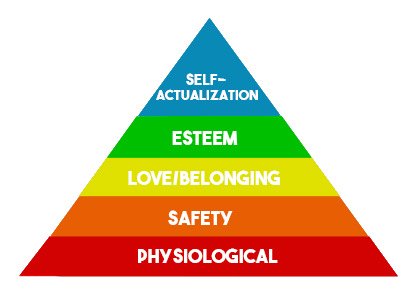As a part of my military service, I’ve been through 3 months command course.
In that course, I’ve learned A LOT about people and how they think, what can motivate them and how to approach to them.

(Photo Credit)
The subject itself is very interesting. We practically learned about human’s brain, how we can get soldiers to understand things (what is the right way to teach) and what to do so they listen to our commands.
You can easily relate it to people in general, and not only for soldiers I need to command on, so I’ve decided to share you guys parts from the things I’ve learned.
I’ve learned a lot, both for military service and for interpersonal communication in general.
What is motivation?
Motivation is a lot of motives who create behavior. Motive is the reason we’re doing different behaviours, it basically gives us the answer to the question – “why”.
Different people have different motives, even if their behavior is the same.
There are two types of motives – external (command, money) and internal (passion, something you believe in, curiosity).
For an example – you work at a clothing shop.
Two workers stay for another shift. One of them is staying because the boss told him too, the other one is staying because he loves the work, he feels helpful for the store.
How to deal with motivation problems?
- Maslow's hierarchy of needs.
- Adams fairness theory.
- Pygmalion effect.
Maslow's Hierarchy Of Needs.
Motives are the reason for the behavior, the human purpose is to provide the motives.
They are divided into five groups arranged hierarchically.
Moving from one set of motives to the one above it depends on satisfying the low group needs.

- Physiological needs: Basics needs - needs of survival as eating, a place to live, enough hours of sleep, equipment.
- Safety: Physiological and mental safety - The need to defense on the physiological existent and the need for knowledge that gives certainty.
- Love/Belonging: The need to be a part of a group, develop friendships.
- Esteem: The need to receive feedback. Feedback is proof of attention and is a lever for improvement and progress.
- Self-Actualization: The need of express skills and abilities in activity.
Adams Fairness Theory (Equity Theory).
According to Adams theory, fairness is defined in a situation which the ratio between the individual's rewards and his investment in work is equal to that of others. The inputs supposed to be equal to the Outputs.

What does it mean? The ratio between one person reward is equal to other person reward at the same work.
If this ratio isn't happening, there's a problem of negative and positive inequity.

Pygmalion Effect.
The Pygmalion effect (Rosenthal effect) says that higher exepctations lead to an increase in performance at things you do.
It practically says that if you believe in yourself, and having positive thoughts about things you do - it'll help at the results.
For an example - if two friends will study to the test together, one of them is very positive and keep telling himself it is going to be a big success and the other one is nervous and keep telling himself he is going to fail (even though he know the study material as good as the first one), the one with is the positive thoughts will succeed much better.
Another example is that if your boss at work have low expectations about you, you'll probably feel that and you won't put much effort to do your work, in contrast, if your boss will have high expectations, you'll try to keep that way and work as good as you can.
That's all I have for you guys, I'd love to hear your thoughts and I'm here to answer any question. 🤗
Hello fellow steemit user! I've taken the time to upvote and follow your account, i use my steem power to help people like you to gain more attraction. Please consider doing the same for my posts and follow me! Have a nice day :)